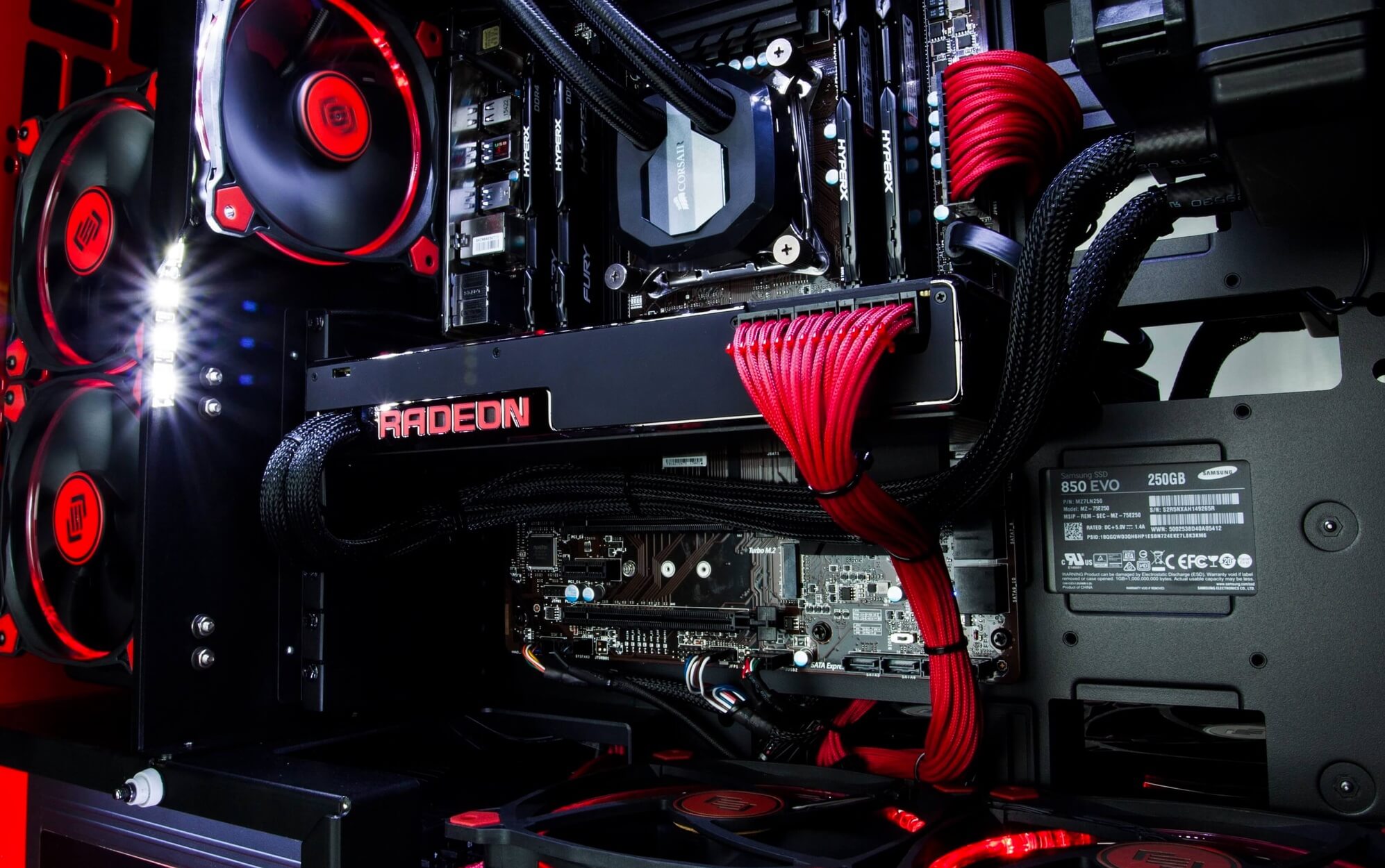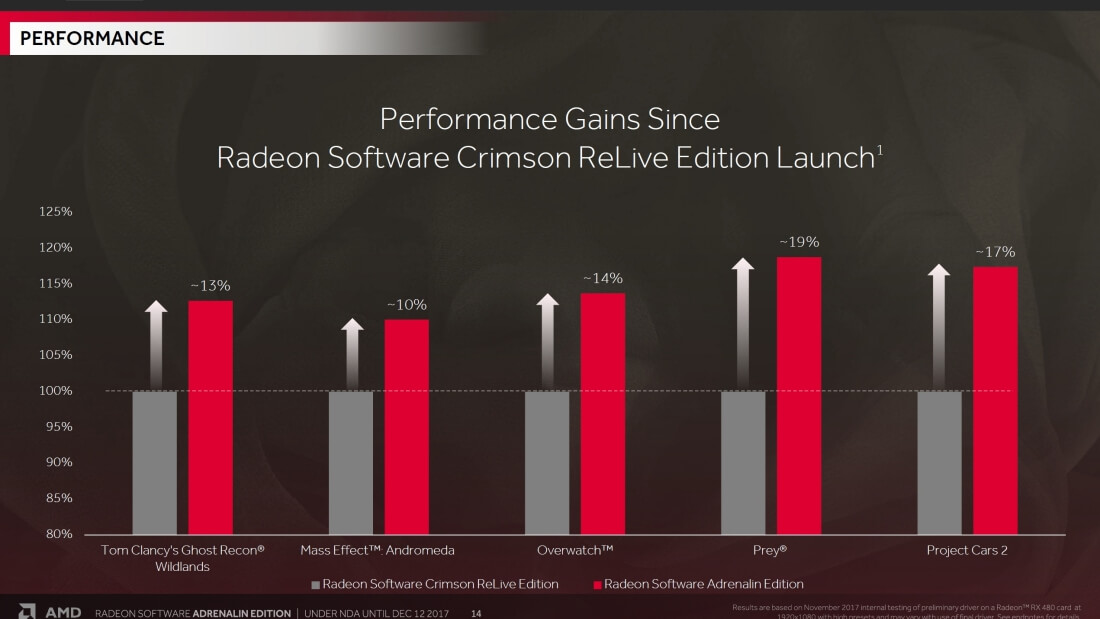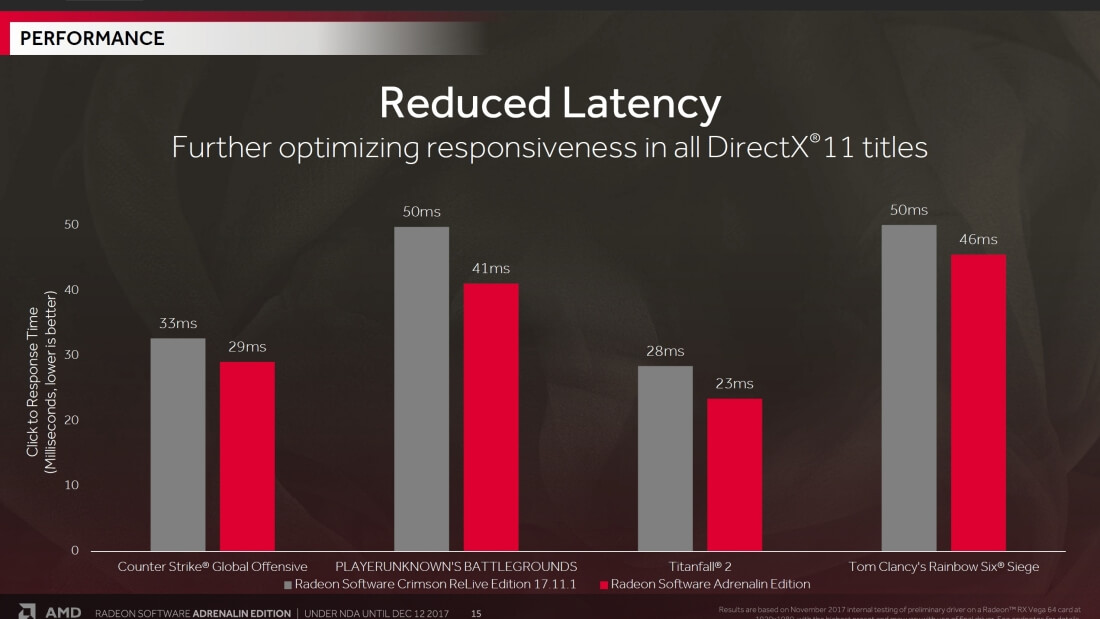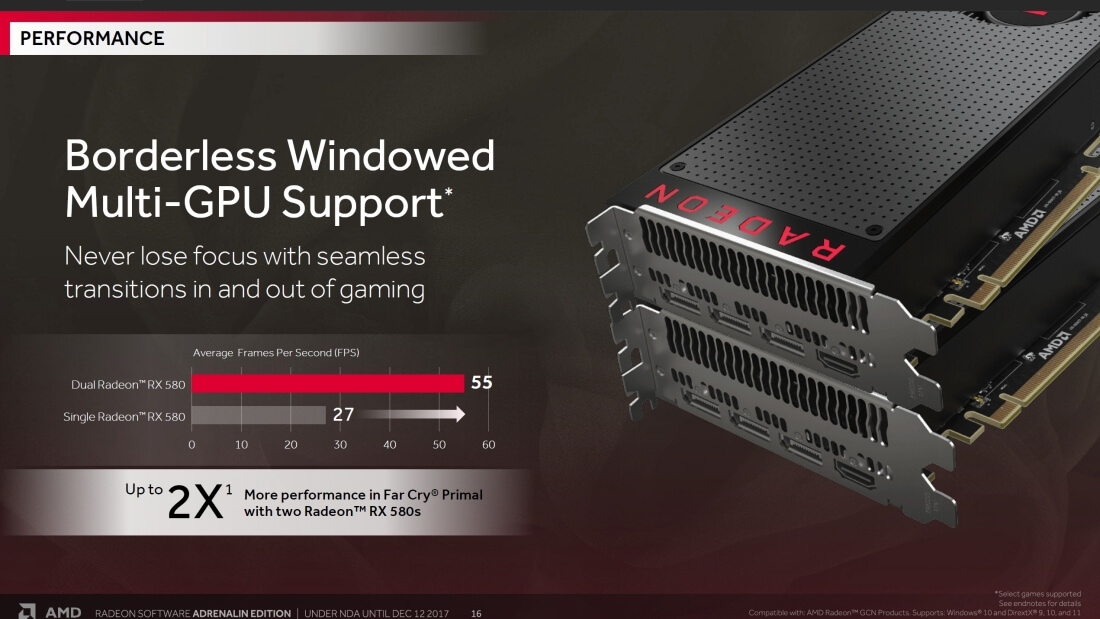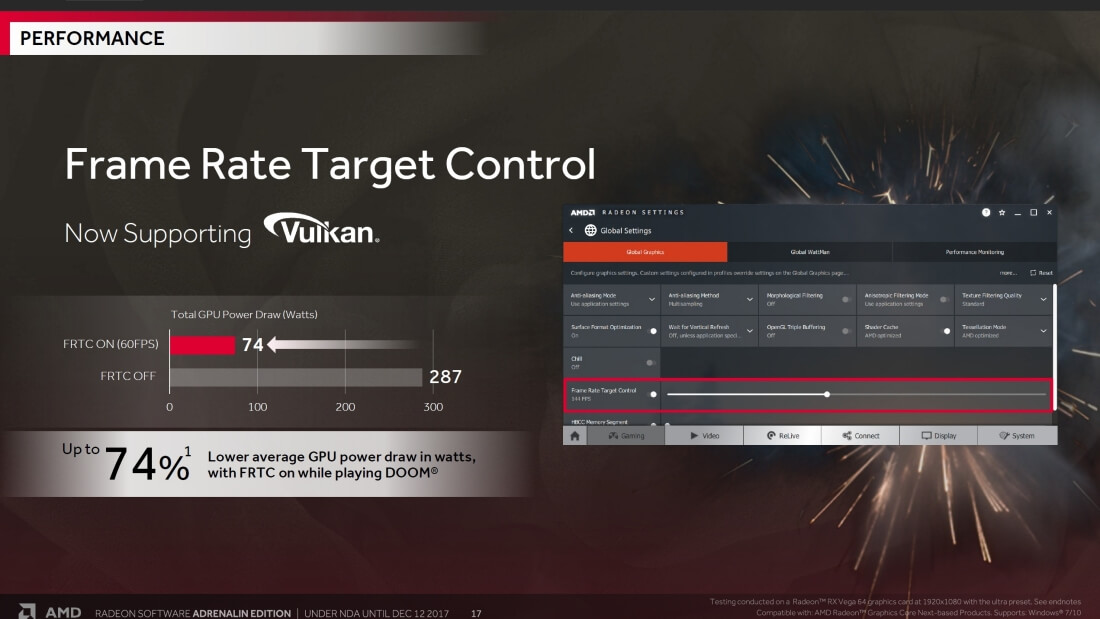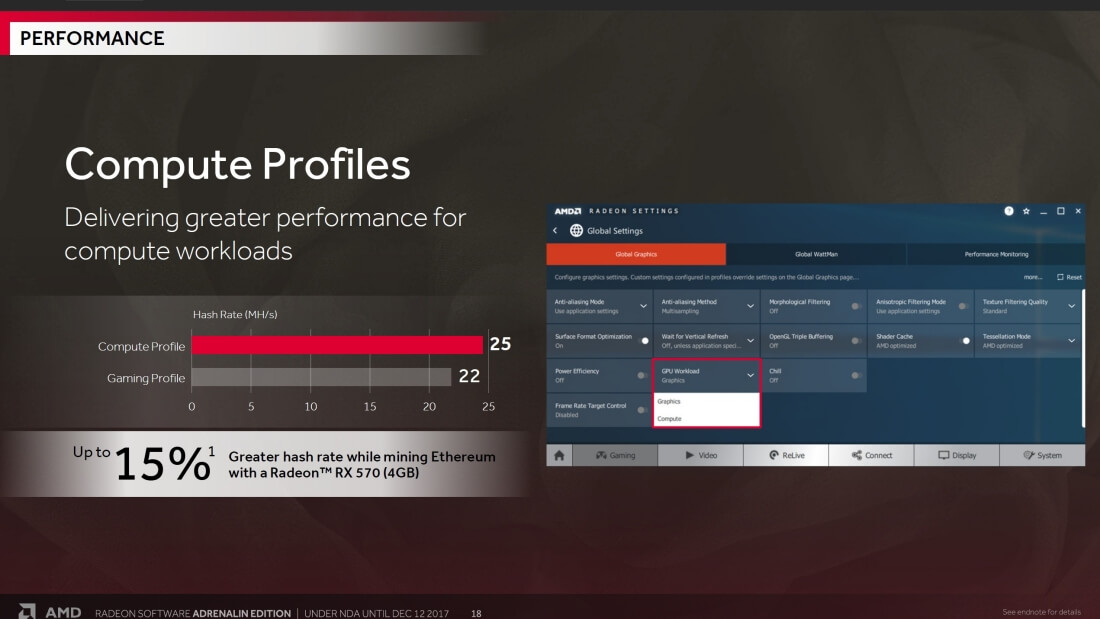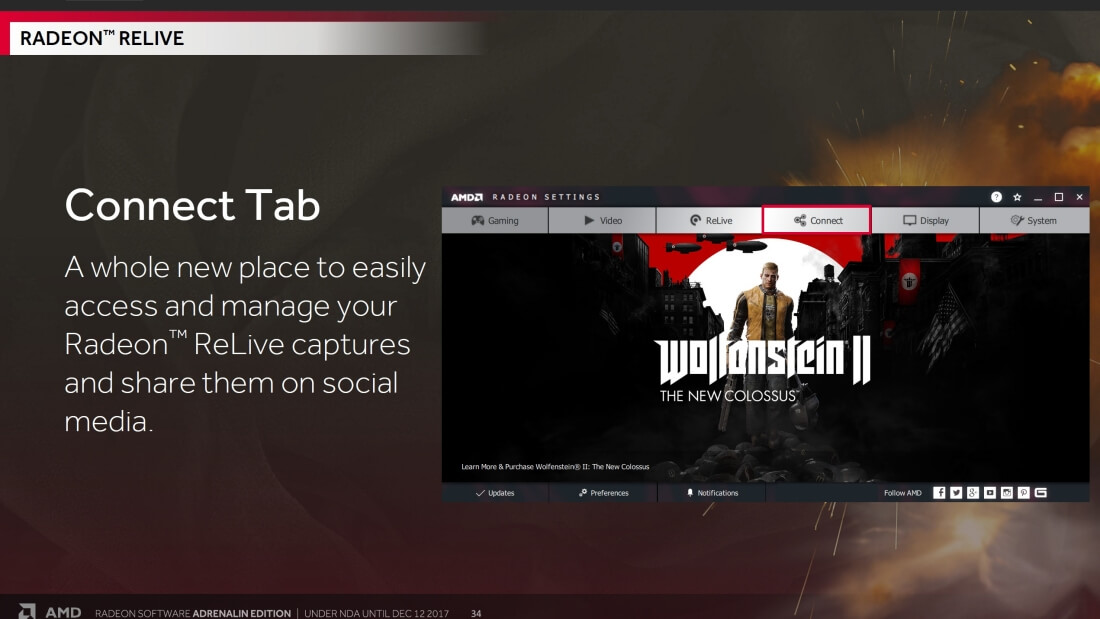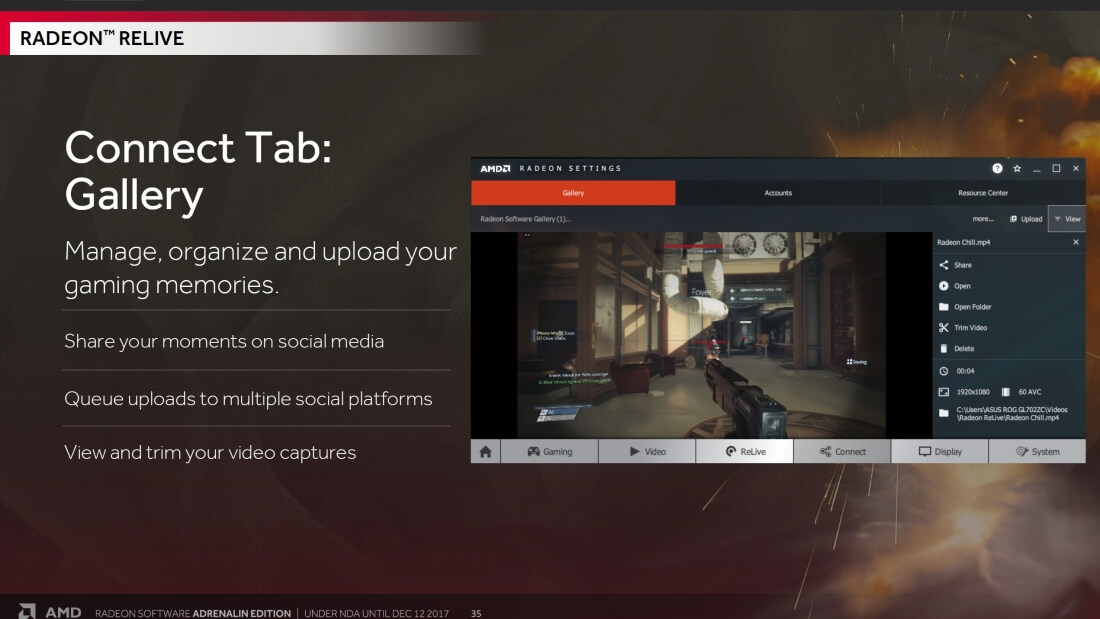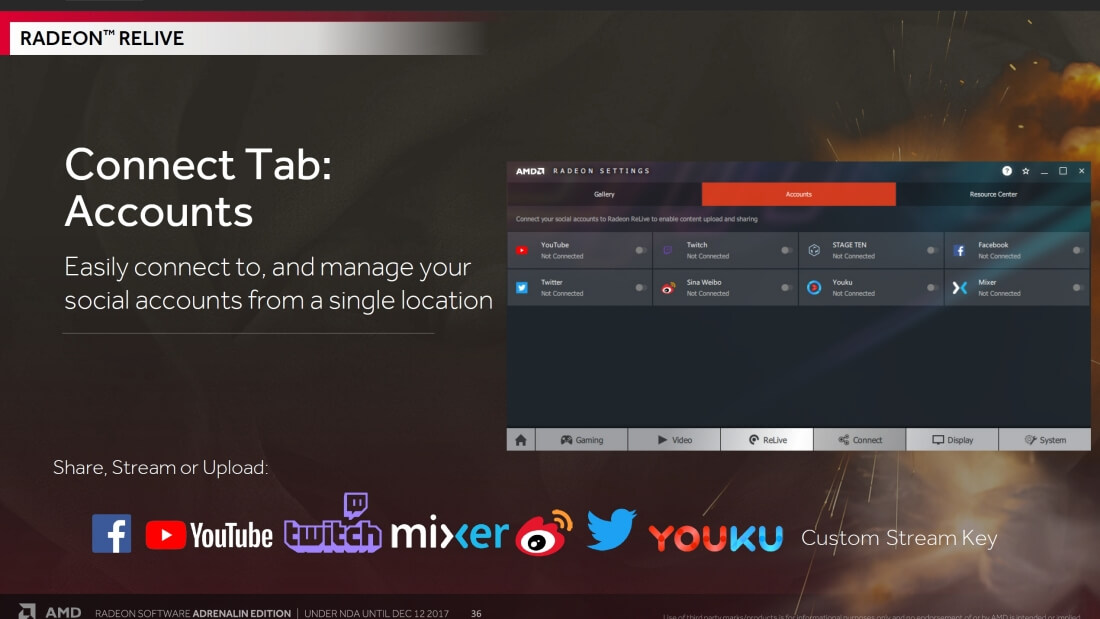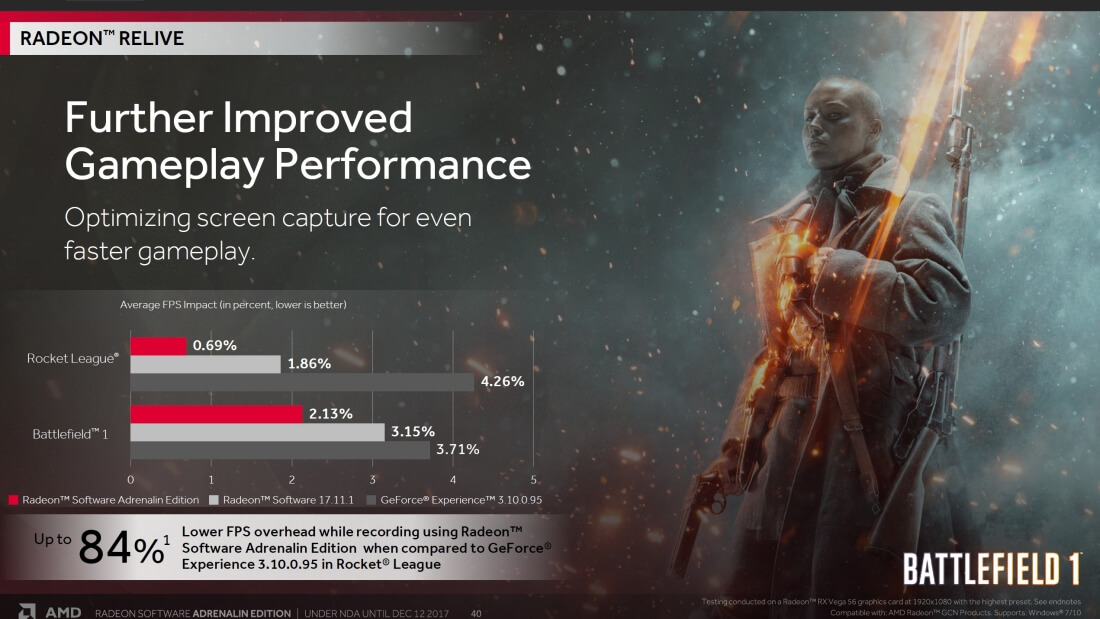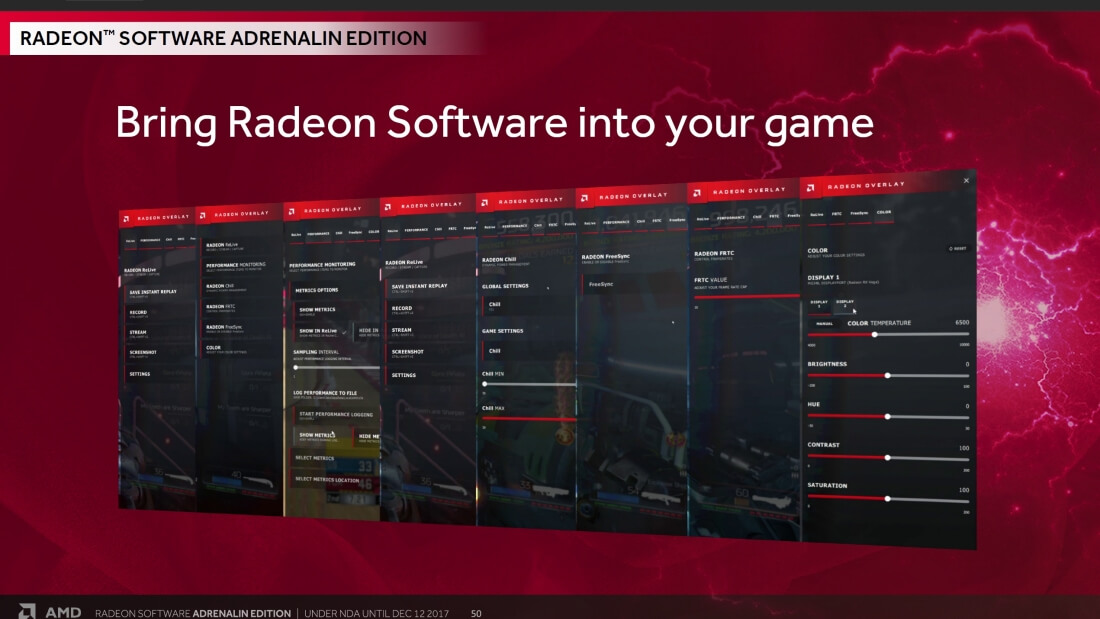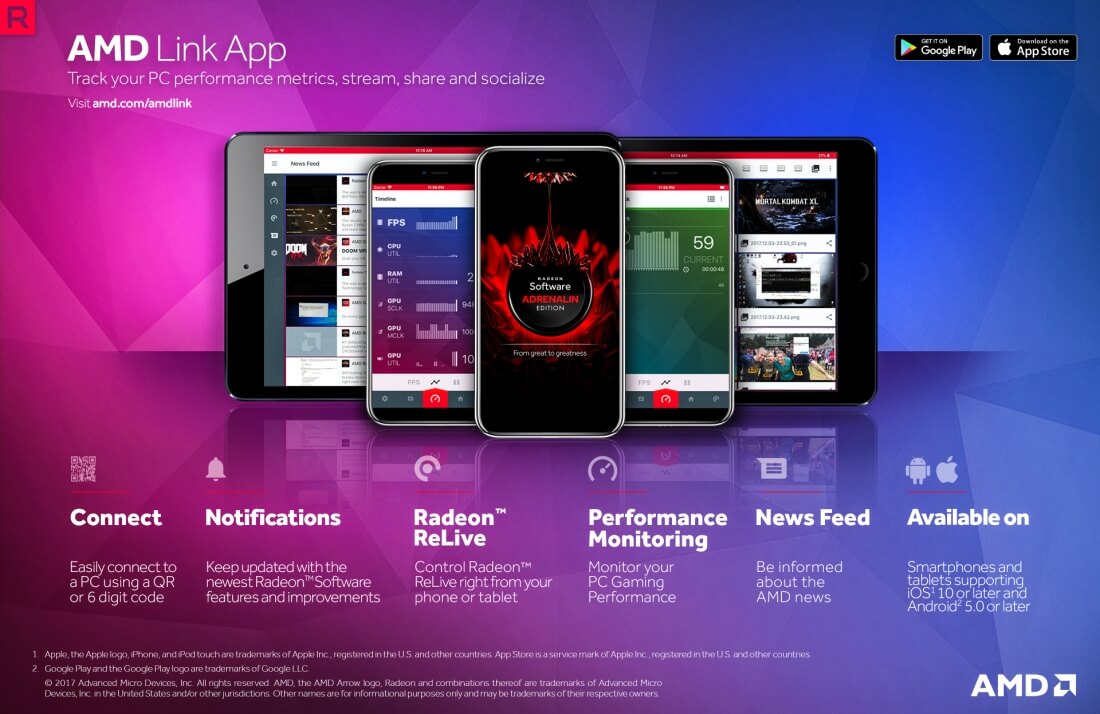It's that time of the year again when AMD overhauls their drivers. For the most part this time around things look much the same as we're still dealing with the same GUI introduced with the Crimson Edition drivers back in 2015. Last year Crimson ReLive added some swanky new features such as ReLive, AMD's answer to ShadowPlay, Radeon Chill, and a number of performance improvements in the vicinity of 3-4% for a bunch of games released in 2016.
Overall Crimson ReLive was an awesome driver update that added much needed features and gave the RX 480 the shot in the arm it needed. Not all features worked flawlessly though, AMD expanded WattMan's support, and that just meant it crashed more than ever. Wattman's functionality hasn't really improved this year and things continued to get dicey with the release of Vega.
Anyway marking the next step in the evolution of AMD Radeon software is the Adrenaline Edition, sounds exhilarating! So what does Adrenaline have for us?
Alright so there are 78 slides in the press deck and I'm going to spare you by skipping over the majority of them. There are a few very cool features that I want to cover, that said I'll start with what I felt was the less exciting stuff, but still worth covering.
Starting with performance gains AMD makes a pointless comparison by saying Adrenaline offers up to 19% gains over the original Crimson ReLive Edition driver, I'd hope so since 4 of the 5 games they show were released after the ReLive Edition driver was first introduced.
Moving on we have some reduced latency claims over the more recent ReLive Edition 17.11.1 driver so that's kind of neat. Improvements were noted for CSGO, PUGB, Titanfall 2 and Rainbow Six Siege. Apparently those playing PUBG you can expect an 18% reduction in latency and here we're talking about an 18% improvement in click to response time.
This isn't something I can accurately test at the moment so I focused on fps performance measuring the average, 1% and 0.1% low results.
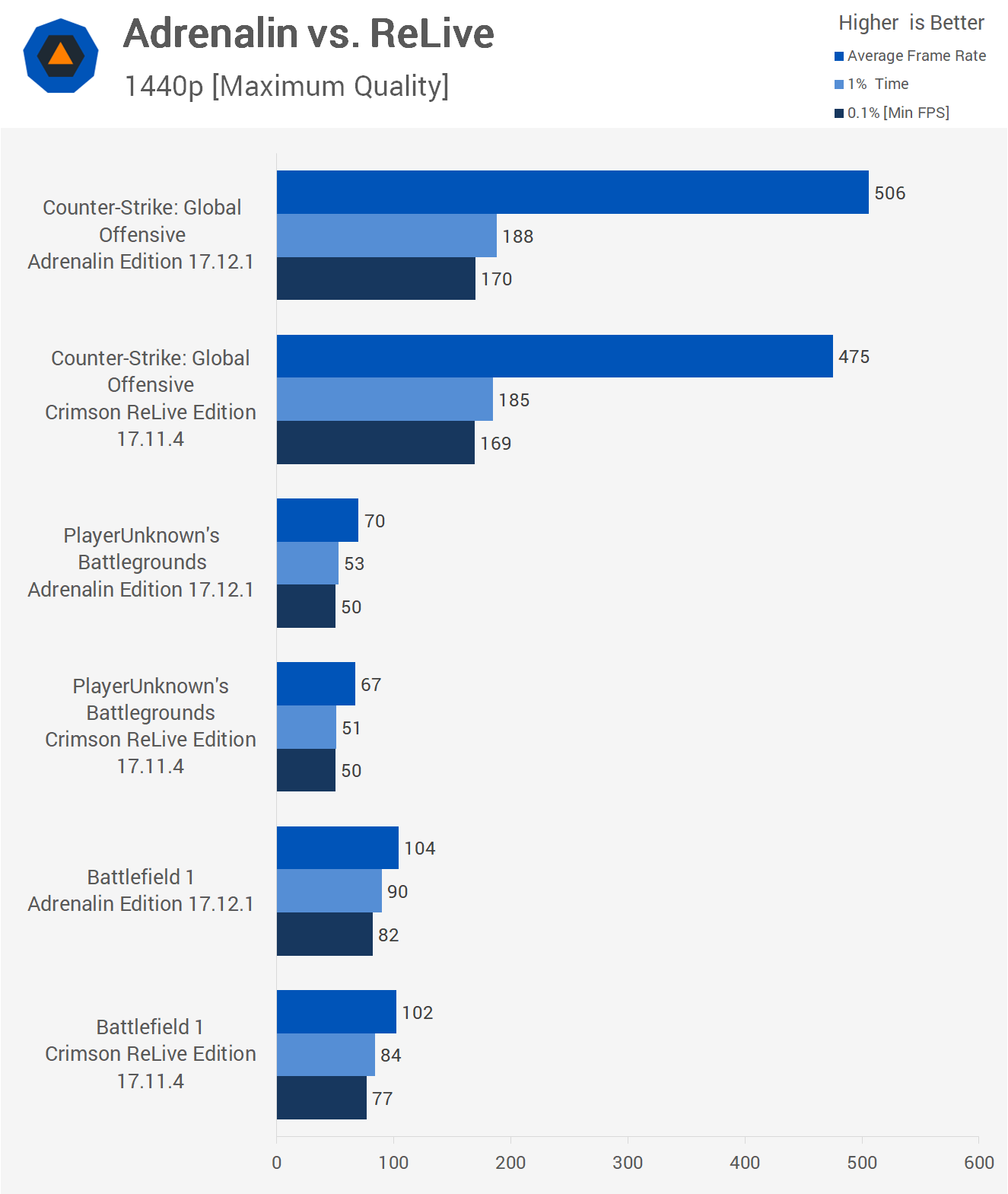
Here is a quick look at the results. I had also planned to include results for the new Star Wars Battlefront II title, but the game doesn't detect the new Adrenaline driver and therefore refuses to load, so we won't get to witness viewer rage in the comments section for including that one, what a shame, opportunity missed.
In addition to PUGB and CSGO, the two main games I wanted to test, I also checked out Battlefield 1. For testing I used an air-cooled Vega 64 graphics card and found that the average frame rate in CSGO was boosted by 7% though the change for the 1% and 0.1% result was minimal. The gains for Battlefield 1 and PUGB were even less and despite basing them on a three run average I'd say some of the margins seen are within the margin of error.
So this time around we're not seeing the nice gains for Vega that we saw with the RX 480, which is a shame.
Moving on the Adrenaline driver offers borderless windowed multi-GPU support, so that's good for whoever is foolish enough to be using two AMD or Nvidia GPUs in 2017.
FRTC or Frame Rate Target Control now supports Vulkan titles, all of them. You know Doom, Wolfenstein, ahh Dota 2 has Vulkan support, doesn't it? Ohh and it was recently added to Ashes of the Benchmark. So for those games and any I'm possibly forgetting you can now cap frame rates to reduce power draw and GPU operating temperature. I'm all about those burning fast fps so, this one isn't for me.
You can now set the GPU workload from graphics to compute for enhanced compute performance, so when mining. AMD says this setting this option to the compute profile boosts the RX 570's Ethereum mining performance by 15%. So it looks like miners stand to gain the most so far.
Something kind of cool is the new connect Tab, it's not mind-blowing or anything but it's a neat little addition. The connect tab houses three sub menus, gallery, account and resource center. The gallery allows gamers to manage their ReLive captures footage, here it's possible to share and upload captures, and there's even some basic editing functionality.
For uploading you can manage accounts in the appropriately named accounts tab, access to services such as YouTube, Twitch, Twitter and various other social media platforms exist.
Then finally stay in the Radeon loop with the resource center, this is probably more beneficial for AMD's marketing but who knows you might find some cool stuff here every now and then.
AMD's also made some tweaks and improvements to the ReLive feature. The impact on framerate performance has now been lessened by up to a claimed 84%. There's now support for borderless region capture which means you can capture only what you want but selecting a specific window.
You can now use AMD Eyefinity with ReLive to capture footage across multiple monitors and finally it's also possible to record separate audio tracks so you can separate your mic input from the game's audio, that's a very cool feature for streaming.
One of the coolest though is the new Radeon Overlay feature, an in-game popup menu that allows you to adjust settings on the fly and monitor performance. To enable this new feature simply hit ALT+R and it will face in right of screen. This menu system for me is an amazing addition and really a must to utilize all the various features now on offer in the Radeon software.
AMD's slides show six menus though my Vega 64 setup had just four, still the four I had were all very useful. If you're not a fan of messing around with hotkeys or maybe they just aren't working in some games as that has been a problem in the past you can start from recording with ReLive from this menu. You can also adjust every possible setting imaginable on the fly in-game.
You can change performance monitoring metrics and even adjust the update interval. Other features such as Radeon Chill can be enabled/disabled on the fly and you can even adjust color properties. It's very cool and works perfectly, I love this new feature.
Complementing the the awesome Radeon Overlay feature is AMD Link. AMD Link is an app that's available on Android or iOS devices, so smartphones and tablets for example and it allows gamers to monitor and use features from their mobile device. If you have your phone propped up on a dock in front of you it can show a number of performance metrics such as fps, GPU usage, VRAM usage, clock speeds and so on.
You can also enabled Radeon ReLive and control settings there. Obviously this kind of thing is quicker and easier to manage via hotkeys but it's nice to have the ability to enable and disable remotely. The on screen stats can get in the way so it's kind of nice having the ability to view them on a separate screen. You can also add multiple PCs and it's quick and easy to connect PCs to the app. Overall a neat little addition, but for now I'm more impressed with the Radeon Overlay feature.
Overall it's nice to see these yearly big updates continue from AMD and while not as impressive as last year's update, Adrenaline Edition has some cool new features for Radeon users and at the end of the day, you're getting them for free, so that's always nice.
